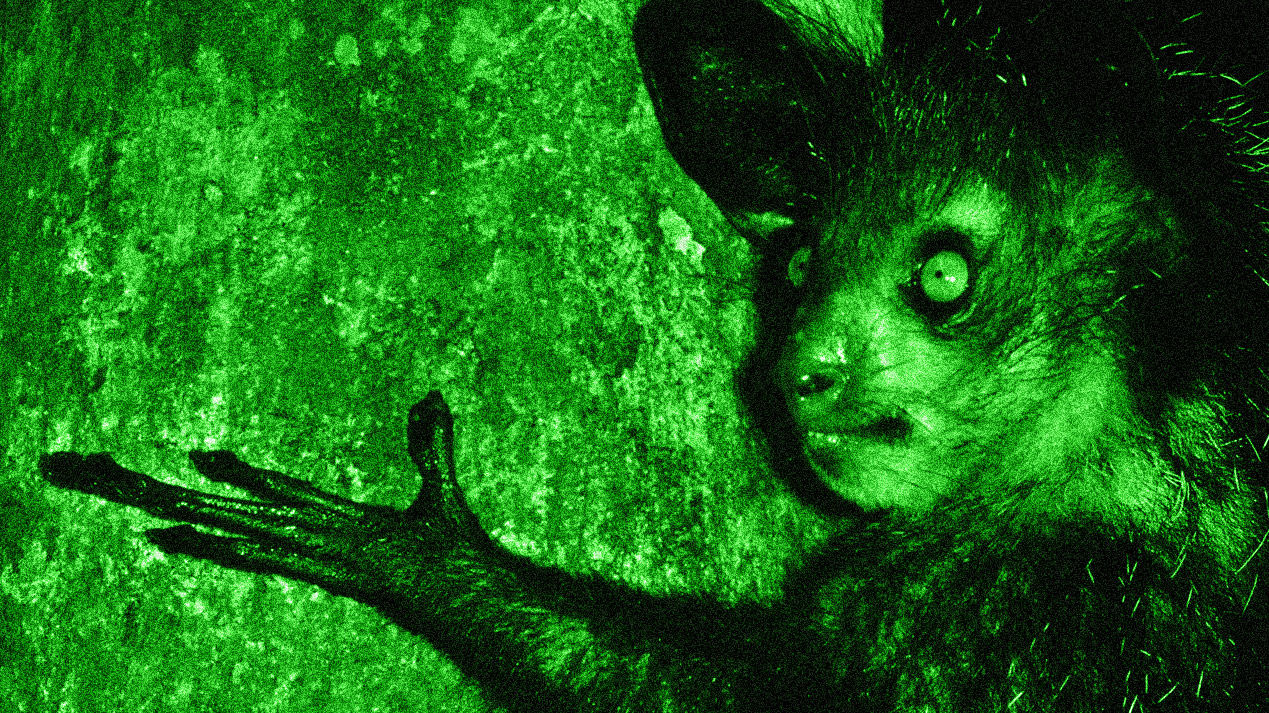© 2021 All Rights Reserved. Do not distribute or repurpose this work without written permission from the copyright holder(s).
Printed from https://www.damninteresting.com/curio/a-grubby-niche/

It is down to geological and evolutionary happenstance that there are no monkeys on the island of Madagascar: a fact that has allowed some 100 species of lemur to survive there. Among them, surely none is stranger than the aye-aye—a most elusive creature in at least four ways.
First, they’re nocturnal. Second, they spend their time exclusively up in trees. Third, the forests of Madagascar have been heavily deforested (a regrettable threat to all lemur-kind), diminishing their number. Fourth, they’ve been hunted to the brink of extinction due to the superstition that they bring misfortune.
They are peculiar looking animals, their appearance characterized by large eyes, bat-like ears, and bedraggled, wiry coats. And then there are their extraordinary middle fingers, which are up to three times longer than the others. These digits are used to tap the trees for the tell-tale hollow sound that betrays the presence of a tasty insect larva commonly known as a ‘grub’ beneath the surface. Having gnawed away bark with their formidable incisors, those same far-reaching fingers extract the prize.
These distended fingers were honed over generations to perfect grub-hunting: the aye-aye’s evolutionary niche. So one might expect convergent evolution to bring about long-fingered, tree-dwelling mammals elsewhere in the world, for the extraction of similar juicy goodies from beneath the bark of native trees. But no—outside of Madagascar, that same niche is otherwise occupied. Because while lemurs in general owe their existence to Madagascar’s lack of monkeys, the aye-aye in particular owes its existence to Madagascar’s lack of woodpeckers.
© 2021 All Rights Reserved. Do not distribute or repurpose this work without written permission from the copyright holder(s).
Printed from https://www.damninteresting.com/curio/a-grubby-niche/
Since you enjoyed our work enough to print it out, and read it clear to the end, would you consider donating a few dollars at https://www.damninteresting.com/donate ?
Interesting stuff. It’s incredible that an island which has lost around 40% of its forests in the last 70 years can still sustain such a large variety of wildlife, including our friend the aye-aye and its 99 relatives.
In regard to deforestation, all I can say is “Humans. The creature that destroys.”
Nice little writeup.
The late Douglas Adams (of “Hitchhiker’s Guide to the Galaxy” fame) also explained this very well in his book “Last Chance to See” and in a subsequent talk at the University of California titled “Parrots, the Universe and Everything.” It’s available on YouTube and quite enjoyable.